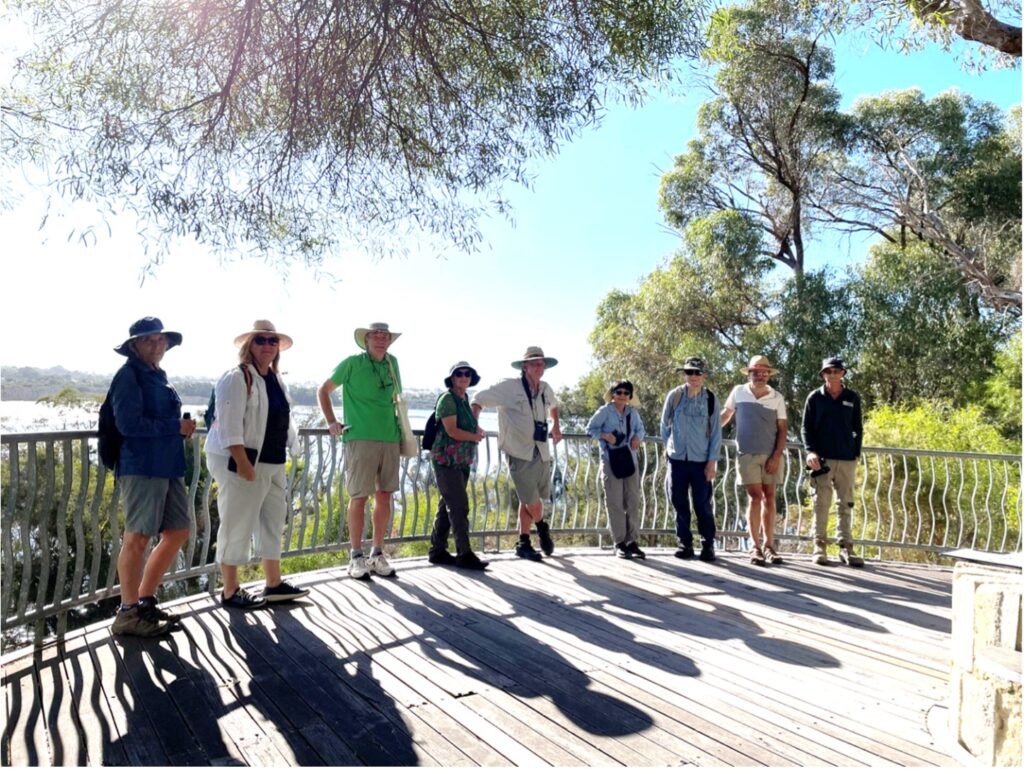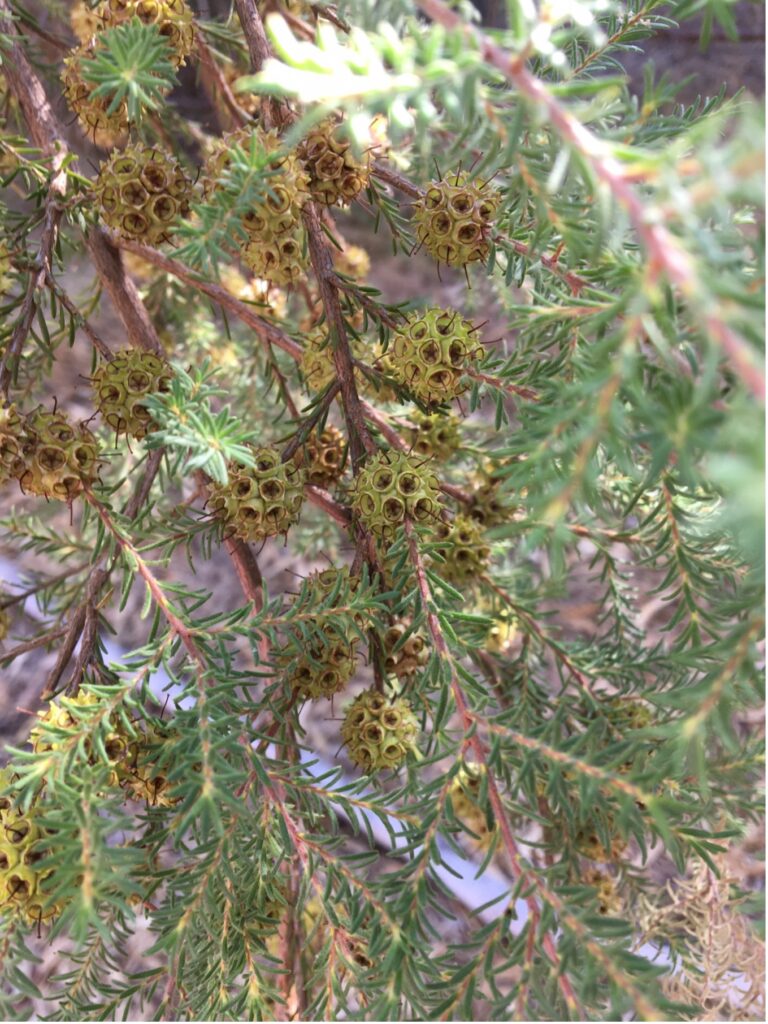Northern Suburbs Branch, 26 March 2025

The Wanneroo and District Branch, now the Northern Suburbs Branch (NSB), held its first excursion on Sunday, 31 March 1985. It was to Neil Hawkins Park on the western side of Lake Joondalup. As part of its 40th anniversary celebrations, 13 NSB members and visitors re-enacted the excursion on Wednesday, 26 March 2025.
Lake Joondalup lookout – Image by Sylvia Tetlow
As with the first excursion, the highlight was the 35 bird species seen or heard in total. Probably the only species that would not have been seen in 1985 was the now plentiful, feral Rainbow Lorikeet. A list of the birds can be found at the end of this article on page 2.
After an Acknowledgement of Country, we stopped at the viewing platform on the lake’s edge to listen to Lake Joondalup – The Lake That Glistens, a collaborative work written for the Joondalup Festival. The song celebrated Lake Joondalup – the lake that glistens – and honours the Noongar people who have cared for it over thousands of generations and still do today.
We then headed north along the path that circumnavigates the lake. Although it was not a time when many native plants were flowering, we managed to find quite a few species that occur mainly around swamps or other wetlands.
First up was Kunzea glabrescens, commonly called Spearwood, typically grows in sandy soil and is often found in wet depressions. David Taggart told us its long branches were used for market garden poles, hence the name of the southern suburb.
Kunzea glabrescens after flowering – Image by Sylvia Tetlow

Few people could recognise Pimelea argentea (Silvery-leafed Pimelea) as its leaves are quite different from other pimeleas. The next one to confuse us because it looked like a melaleuca was Regelia ciliata.
We also saw a large specimen of the hemiparasitic Exocarpus sparteus (Broom Ballart), most likely using an acacia as its host. This species is not common around the lake but occurs frequently in the dunes along the coast.
As predicted, the weather temperature reached 39 degrees. We decided not to extend the walk beyond the lookout, which provided panoramic views of Lake Joondalup. It was here that we searched for the Pittosporum sp. that used to occur but found no surviving plants.
We also saw two specimens of Dog-poo fungus, a dead bobtail and one dragonfly.
Don Poynton
See Page 2 for the Bird List

